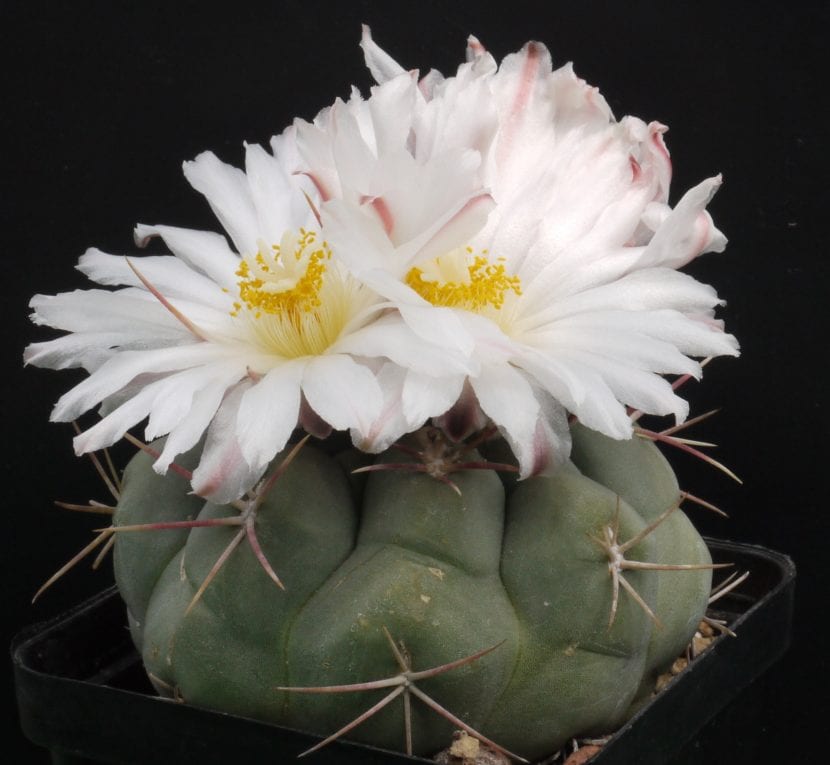
Thelocactus hexahedrophorus
Cacti are plants succulents that have managed to adapt to an arid environment, where very few animals and plants coexist. Its roots develop on a sandy soil, with very few nutrients. Thus, its parts are so striking, because they do not resemble those of other plants.
But What are the parts of the cactus like? If you also want to know what functions they have, after reading this article you will surely like this type of being vegetable 🙂.
Stem or vascular tissue
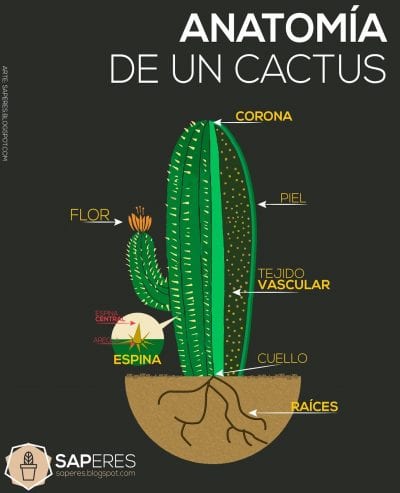
Image - Saperes.blogspot.com
It is in charge of transporting and distributing water and food to all parts of the cactus from the root.. It is, therefore, one of the most important parts, since it will depend on its health that the plant remains alive.
Neck
It is the part that joins the stem with the root system. When transplanting it, it is recommended to take it from this area as it is much safer -for us 😉 -.
Roots
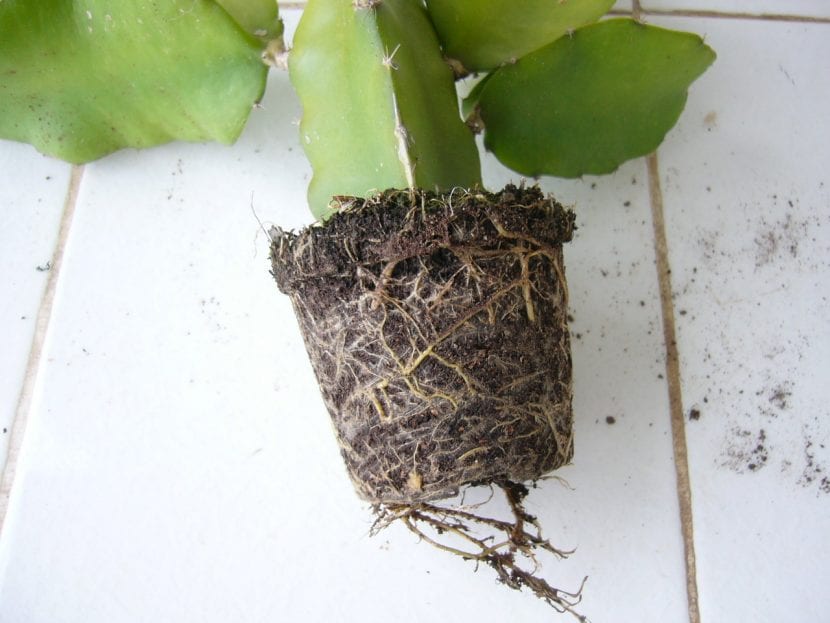
Image - laestrellaquenosguia.com
They are superficial. They have a key function for the survival of the cactus: to absorb water and its nutrients so that from the vascular tissue it can be transported to the entire plant.
Areola
From them arise the thorns and flowers of the cactus. They are shaped like a small pad, and are located on the ribs of the same. In each of them there are two types of spines: the radial ones, which are small and numerous, and the central ones, which usually appear in number from 1 to 3 and are longer.
Thorns
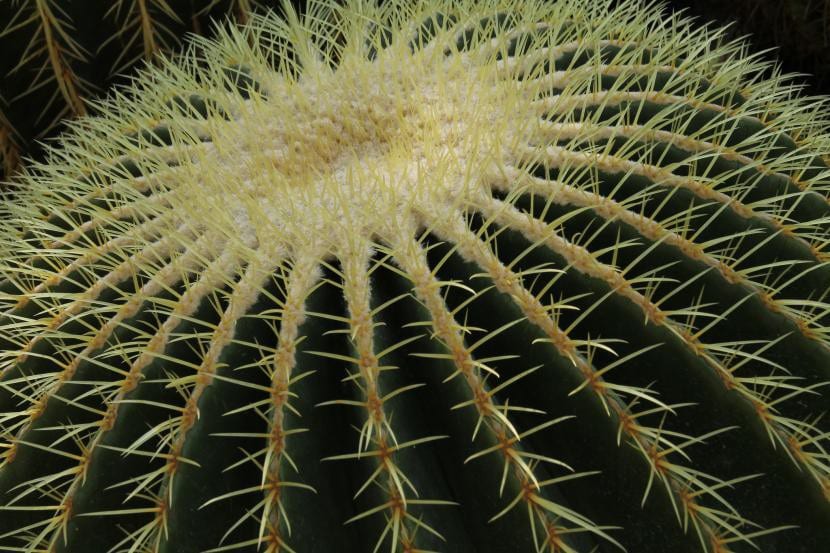
Echinocactus grusonii
They are modified leaves; in fact, the correct term is foliar thorn (foliar means relative to the leaves). These have different functions: protect from the sun and herbivorous predators, direct the water towards the body of the cactus and prevent the evaporation of the water. There are some species that do not have, such as Astrophytum asterias, but the vast majority are armed with them. Some have them very small, others very long, depending on the evolution they have had.
Corona
It is the highest part of the cactus. Connects directly to vascular tissue, so that it is in charge of its growth.
Flowers
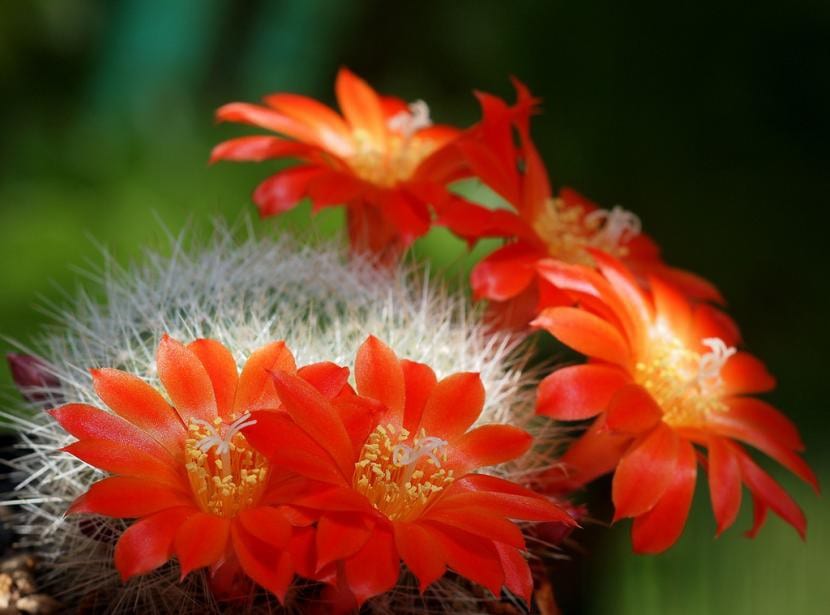
Rebutia senilis
They are solitary and hermaphroditic. Depending on the cactus they can be small or, on the contrary, large (3-4cm), with colors ranging from red to white, through yellow, orange and pink. In habitat, they are pollinated mainly by insects and also by bats.
Fruits and seeds
The fruits are generally very small, no more than 1cm. Inside are the seeds, very small - less than 0cm - but numerous. These are the ones in charge of giving way to a new generation of cacti.
Did you know the parts of the cactus and their functions?